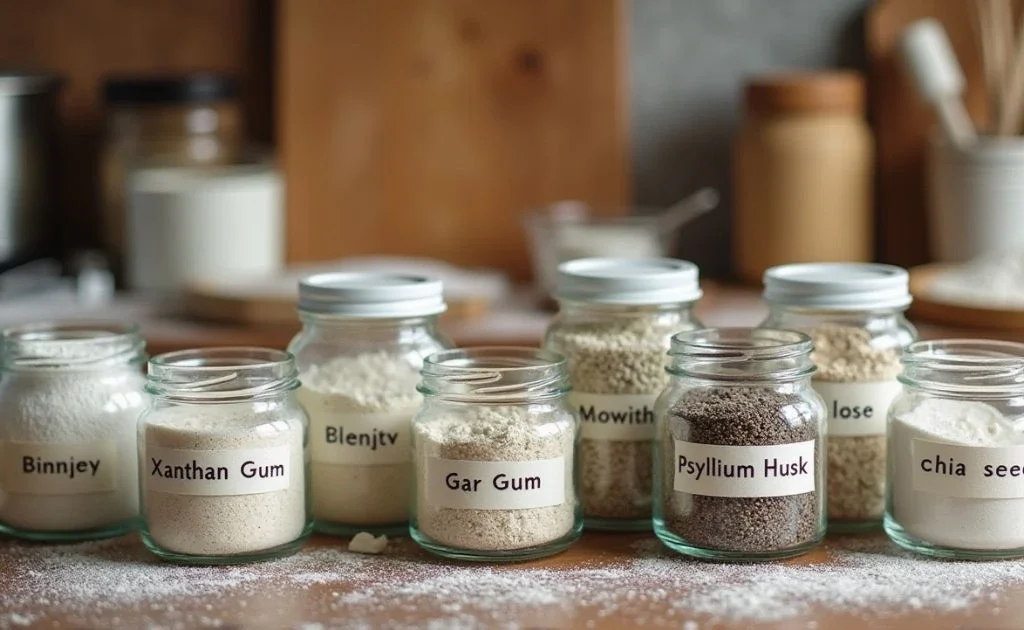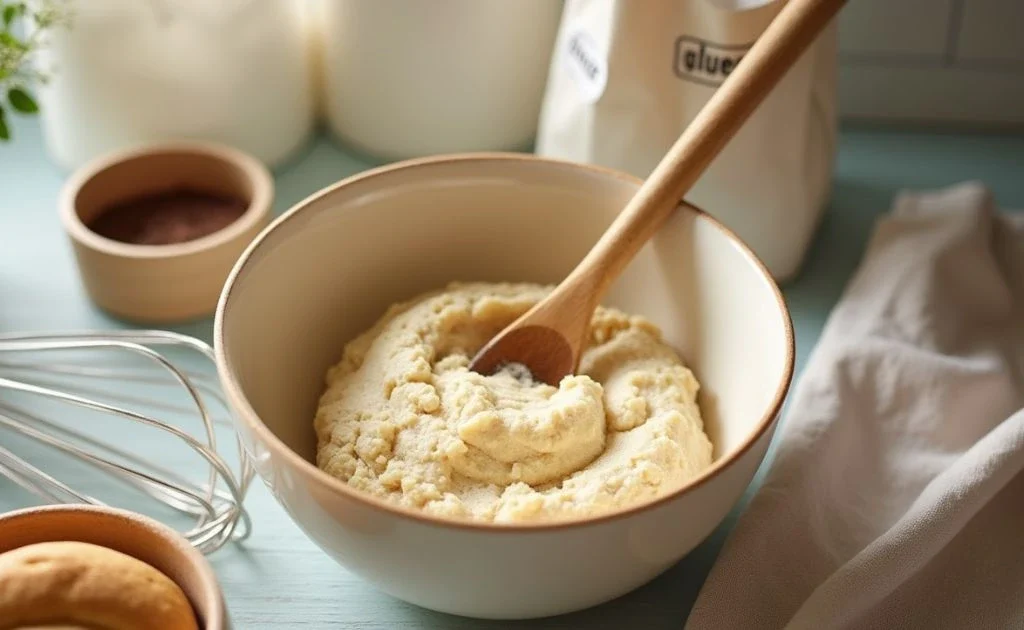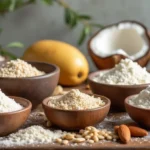Last updated on January 26, 2025
Baking without gluten can be a challenge, but it doesn’t have to be. Whether you’re new to gluten free baking or a seasoned pro, these gluten free baking hacks will help you achieve perfect pastries every time. From understanding the best flour blends to mastering the art of dough, this guide is packed with tips and tricks to make your gluten free baking journey a success.
Table of Contents
Understanding the Basics of Gluten Free Baking
Before diving into the hacks, it’s important to understand the basics of gluten free baking. Gluten is the protein found in wheat, barley, and rye that gives dough its elasticity and helps it rise. When baking without gluten, you need to replace this structure with alternative ingredients and techniques.
Common Challenges in Gluten Free Baking:
- Crumbly Texture: Gluten-free doughs tend to be more fragile and crumbly.
- Dense Products: Without gluten, baked goods can turn out denser and less fluffy.
- Difficulty in Rising: Gluten-free flours don’t trap air as effectively, which can result in flat, dense pastries.
Top Gluten Free Baking Hacks for Perfect Pastries
1. Use a Blend of Gluten-Free Flours

One of the most crucial hacks for successful gluten free baking is using a blend of gluten-free flours. Since no single gluten-free flour can mimic the properties of wheat flour, combining different flours helps to achieve a better texture and flavor.
Popular Gluten-Free Flours for Baking:
- Rice Flour: Neutral flavor, great for all-purpose use.
- Almond Flour: Adds moisture and a subtle nutty flavor.
- Coconut Flour: Highly absorbent, perfect for dense baked goods.
- Tapioca Starch: Adds chewiness and helps bind ingredients.
- Sorghum Flour: Offers a mild, sweet flavor and good texture.
Pro Tip: If you’re making pastries like pie crusts or cookies, try combining rice flour, almond flour, and tapioca starch for a balanced texture.
2. Don’t Skip the Binding Agents

In gluten free baking, binding agents like xanthan gum or guar gum are essential. These ingredients help to provide the structure and elasticity that gluten typically offers, preventing your pastries from crumbling.
How Much to Use:
- Xanthan Gum: Add 1 teaspoon per cup of gluten-free flour.
- Guar Gum: Add 1 teaspoon per cup of gluten-free flour for bread and ½ teaspoon for cakes or cookies.
Pro Tip: If you don’t have xanthan or guar gum, you can also use psyllium husk or chia seeds as natural alternatives.
3. Hydrate Your Dough
Gluten-free flours are often more absorbent than wheat flour, so your dough may require more liquid. Additionally, allowing the dough to rest for 15-30 minutes before baking can improve the texture by giving the flour time to fully hydrate.
Pro Tip: If your dough is too dry or crumbly, add a tablespoon of liquid (water, milk, or even yogurt) at a time until it reaches the right consistency.
4. Add Extra Leavening Agents
To combat the density often associated with gluten-free baked goods, add a bit more leavening agent (like baking powder or baking soda) than you would in a recipe that uses wheat flour. This extra boost will help your pastries rise better.
Suggested Amounts:
- Increase the baking powder by 25% (e.g., if the recipe calls for 1 teaspoon, use 1 ¼ teaspoons).
- For baking soda, increase by about 1/8 teaspoon per cup of gluten-free flour.
Pro Tip: Incorporating an extra egg white or a bit of apple cider vinegar (1 teaspoon) can also improve rise and fluffiness.
5. Don’t Overmix the Dough

Overmixing gluten-free dough can make it tough and dense. Mix just until the ingredients are combined to avoid this issue.
Pro Tip: Use a gentle hand when mixing, and if possible, mix by hand rather than using an electric mixer to prevent overworking the dough.
6. Use Room Temperature Ingredients
Using room temperature ingredients helps them blend more evenly, which is particularly important in gluten free baking. Cold ingredients can cause the dough to seize or not mix properly, leading to uneven texture.
Pro Tip: Take eggs, butter, and other refrigerated ingredients out of the fridge about 30 minutes before you start baking.
7. Bake at a Lower Temperature

Gluten-free baked goods often benefit from being baked at a slightly lower temperature for a longer period. This allows them to cook through without burning the exterior.
Suggested Temperature Adjustments:
- Reduce the baking temperature by 25°F (about 15°C) from what the recipe suggests.
Pro Tip: Keep an eye on your pastries towards the end of the baking time to ensure they don’t overbrown. If they’re browning too quickly, tent them with foil.
8. Incorporate Moisture-Rich Ingredients
Gluten-free flours can sometimes produce dry, crumbly pastries. To counteract this, incorporate moisture-rich ingredients like yogurt, applesauce, or mashed bananas into your recipes.
Pro Tip: If you find your dough or batter too dry, adding an extra tablespoon of oil or melted butter can make a big difference.
9. Use Parchment Paper for Rolling and Baking

Gluten-free doughs can be sticky and difficult to handle. Rolling out dough between two sheets of parchment paper can make the process much smoother and prevent sticking.
Pro Tip: When baking cookies or pastries, lining your baking sheets with parchment paper ensures easy removal and even baking.
10. Experiment and Don’t Give Up
Gluten free baking can involve a lot of trial and error. Different brands of flours and ingredients can yield different results, so don’t be afraid to experiment and tweak recipes until you find what works best for you.
Pro Tip: Keep a baking journal to track your experiments, noting what worked and what didn’t. This will help you perfect your gluten free baking over time.
Final Thoughts: Mastering Gluten-Free Pastries
With these gluten free baking hacks, you’re well on your way to creating perfect pastries every time. Remember, practice makes perfect, and each batch is an opportunity to learn and improve. Whether you’re making flaky pie crusts, tender cookies, or airy cakes, these tips and tricks will help you achieve the results you’re looking for. Happy baking!





4 thoughts on “Gluten Free Baking Hacks: Tips and Tricks for Perfect Pastries Every Time”